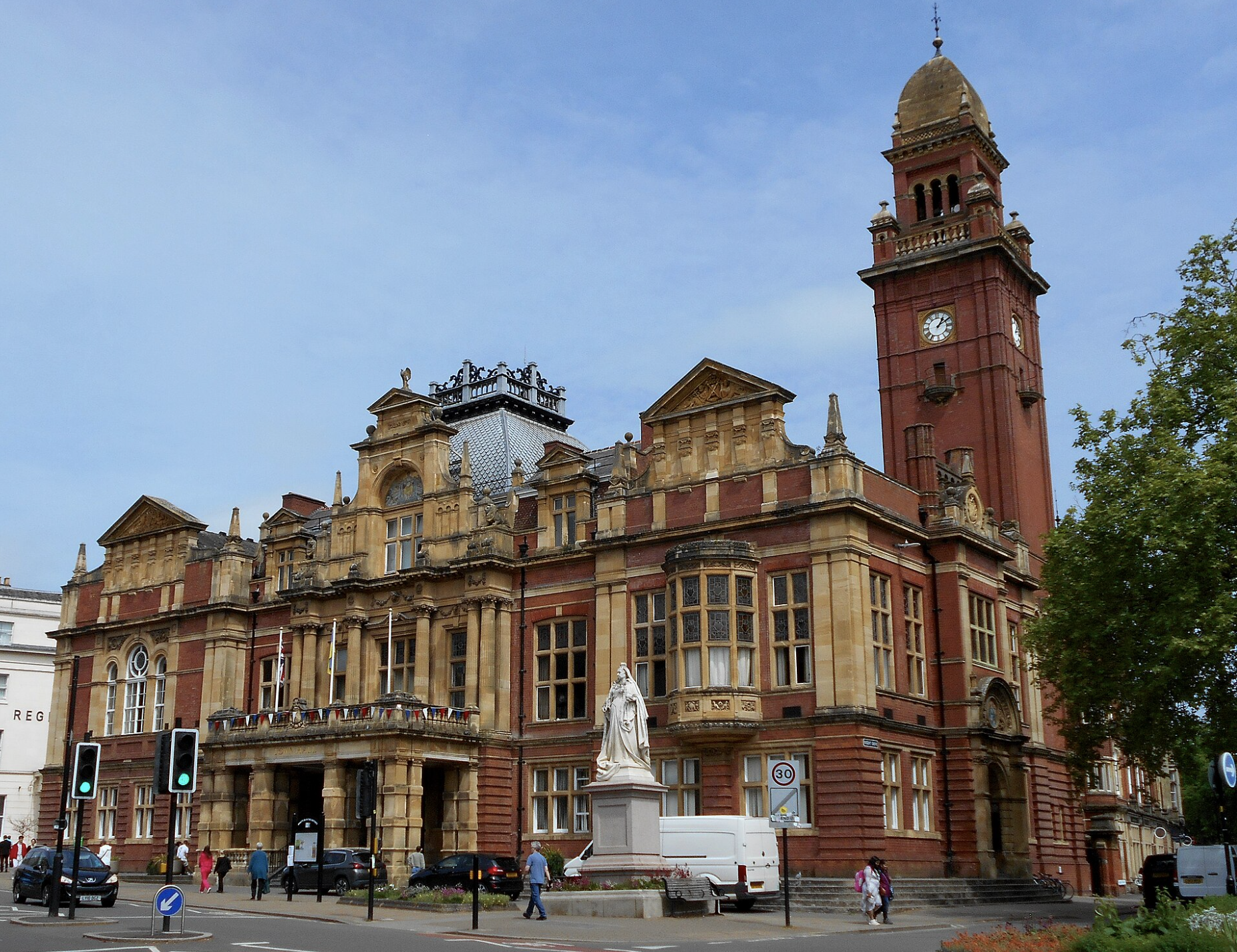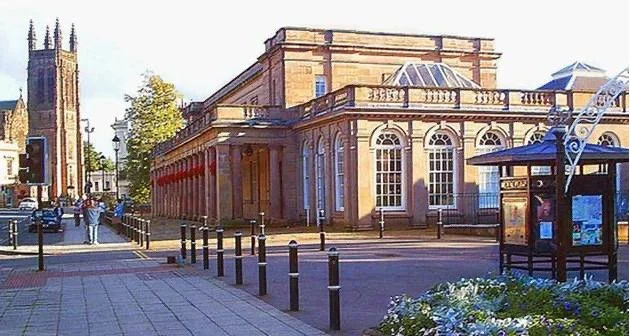Royal Leamington Spa: an important example of neoclassical architecture
Emily Cornish
Royal Leamington Spa, nestled in the heart of Warwickshire, is a popular place for students and renowned for its picturesque scenery. The town boasts a Georgian-Regency style, characterised by white buildings, decorated with classical features such as columns, stoas, and pediments, with a rich history that shines through its architecture.
Its Georgian style is based on Palladianism, a style developed by the Italian Renaissance architect Andrea Palladio, who was influenced by ancient Greek and Roman architecture. Palladianism emphasises symmetry, simple outward appearances, and lavish interiors, and it dominated the 18th century during the reigns of Kings George I to IV.[1]
When walking along the upper parade of the town, you’ll find shop entrances often feature Ionic Columns, known for their swirling pattern at the top, which offers a more aesthetically pleasing view. Their perfect symmetry perhaps hints at a subtler idea about Leamington Spa, not simply two columns identical in design, but that their presence creates the impression of a more uniform and unified town, as intended by Palladianism.
One of the most iconic buildings of Leamington, which may not conform with the Palladian style of the rest of the town, is the Town Hall. It maintains classical elements, much like the rest of the town; however, it stands out due to its lack of white paint, unlike the rest of the town. Large columns, both Doric, known for their simplicity, and Ionic, decorate the front of the town hall. Multiple pedestals are featured, and the columns, although not fully rounded, serve as mere ornaments on the walls, not a structural feature, but rather a decorative element. The inside, unlike Palladianism, is more plain, still classical and grand, but less decorated, capturing the architectural style of its time (the hall was built in the 1830s), which favoured a neoclassical touch.
Moving further south, the Royal Pump Rooms, another notable historic site, features a museum dedicated to the town's rich past, a charming café, and Leamington Spa’s library. However, it’s the assembly rooms – an epitome of Palladianism: sporting a classical stoa, Doric columns, even a mosaic decorates its covered path, and above the stoa stand three statues of the god of medicine, Asclepius; the goddess of hygiene and cleanliness, Hygeia; and the father of medicine, Hippocrates, who pursued the idea that cleanliness prevents disease.[2] The appearance of the three figures reflects the purpose of the Pump Rooms, though they were removed in 1938, their removal does not erase the memory of the site’s original function. Inside, there are elaborately decorated Corinthian columns made of marble and painted gold, high ceilings, and more classical style statues - its grandeur and charm are impossible to ignore.
https://media-cdn.tripadvisor.com/media/photo-s/18/45/05/f1/welcome-to-the-royal.jpg
There are other parts of Leamington that, while not as impressive as the Town Hall or Royal Pump Rooms, still exude the town's neoclassical charm. One example is Lansdown Crescent, which might remind visitors of Bath’s famous crescent – another city shaped by Palladian influence, even more so than Leamington itself. Though less grand, Leamington’s Lansdown Crescent perfectly captures the Georgian style of the town. Its white rows of townhouses feature classical touches such as decorative columns, pediments, and the uniformity of Palladianism – details that residents of Leamington know well.
In summary, Royal Leamington Spa is a town renowned for its charm and beauty, exemplified by Georgian and Palladian architecture. From simple shops to grand buildings, its streets showcase distinct neoclassical features. The architectural style, unique among English towns, is an inspiration to both visitors and residents, serving as a reminder of our rich architectural heritage.
[1]bing.com/ck/a?!&&p=f9752498638160df31d00f12b0610b0a726c58d74e8df5d24775a4000817b266JmltdHM9MTc1OTQ0OTYwMA&ptn=3&ver=2&hsh=4&fclid=23a4629b-5b7b-672e-2acc-77335ac06634&psq=palladianism&u=a1aHR0cHM6Ly93d3cubmF0aW9uYWx0cnVzdC5vcmcudWsvZGlzY292ZXIvaGlzdG9yeS9hcmNoaXRlY3R1cmUvd2hhdC1pcy1wYWxsYWRpYW5pc20&ntb=1
[2] https://friendsofpittville.org.uk/wp-content/uploads/2019/03/The-Pump-Room-statues.pdf


